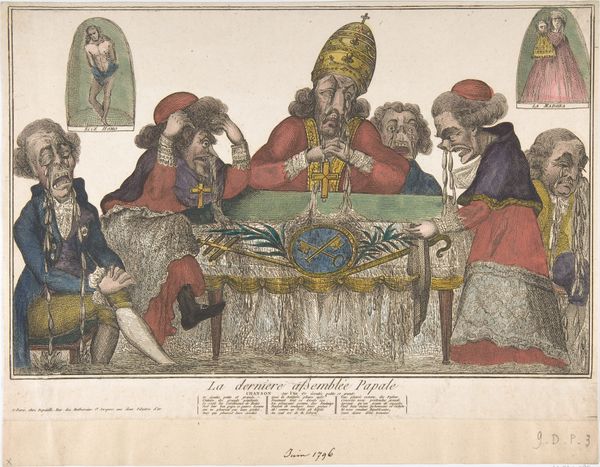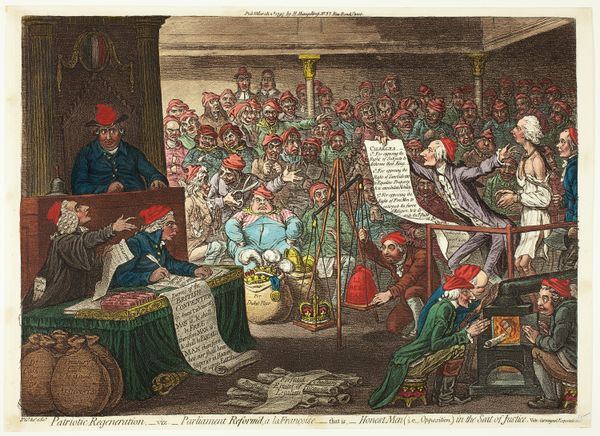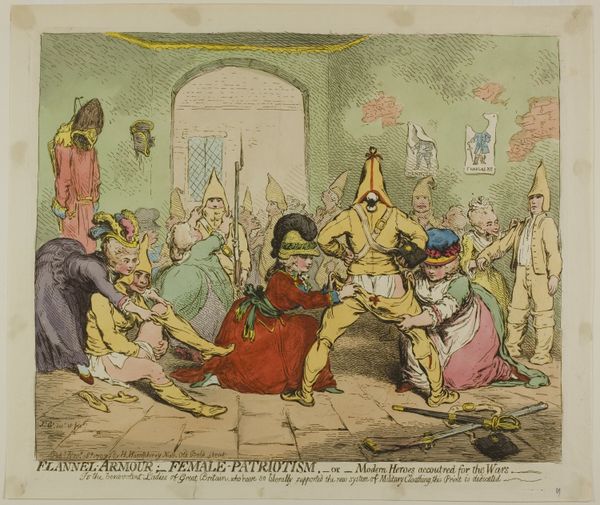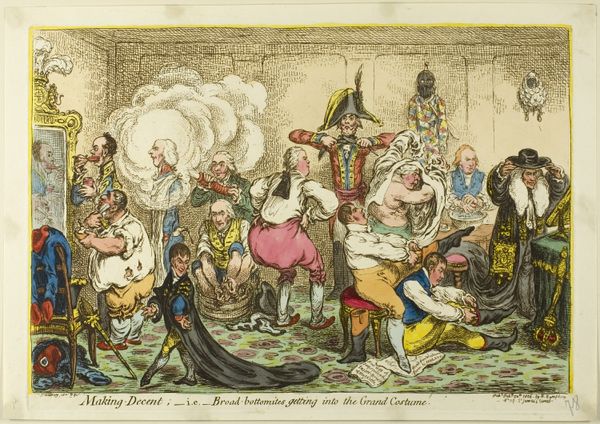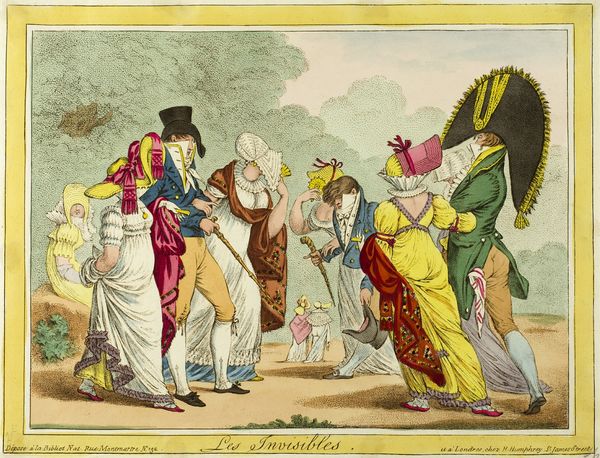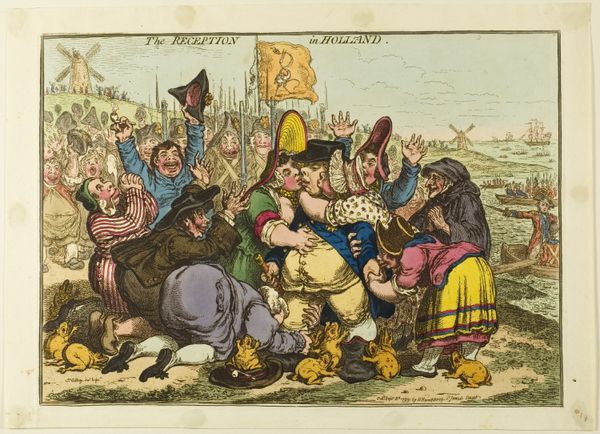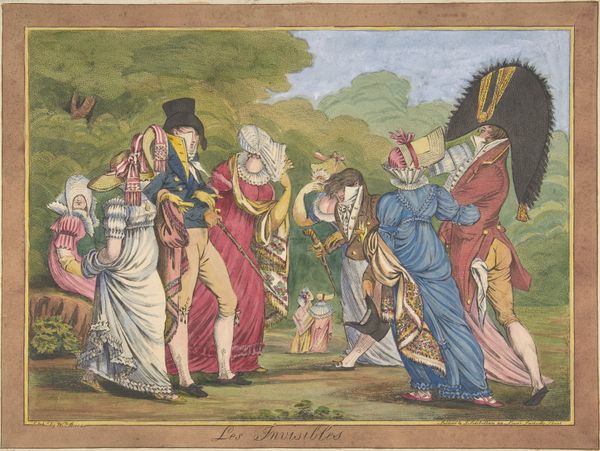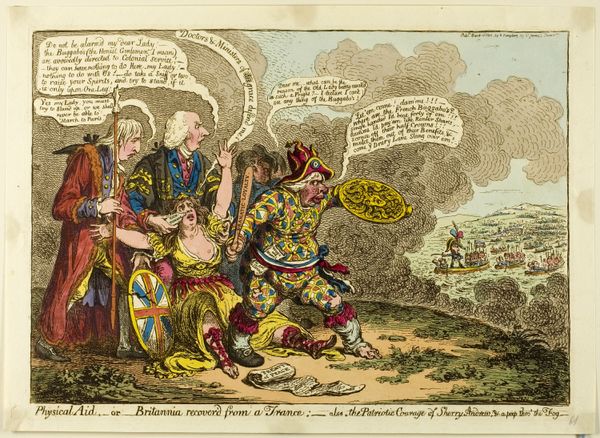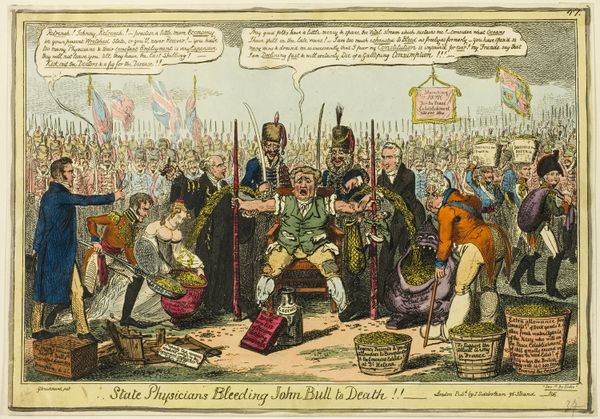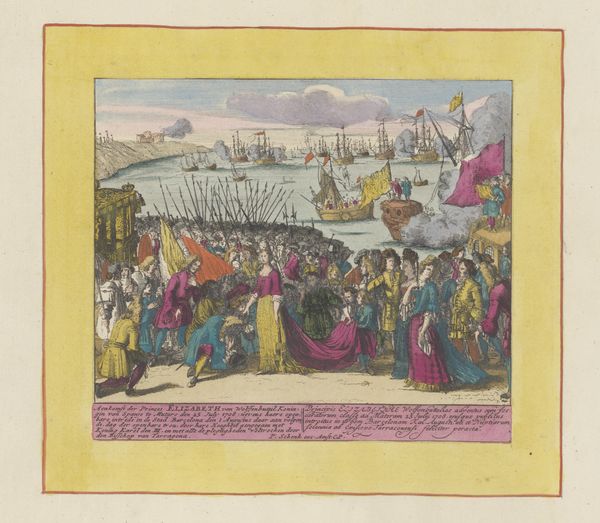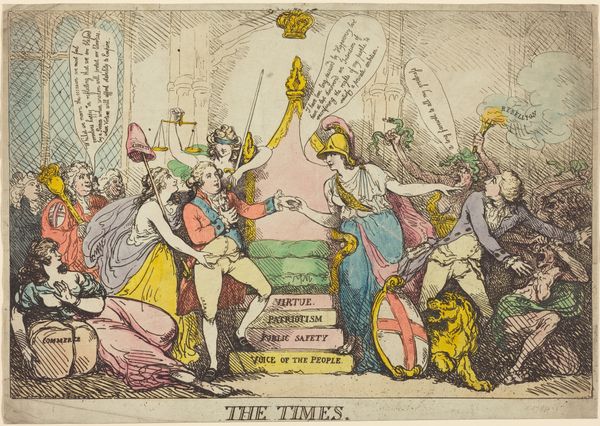
Introduction of the Pope to the Convocation at Oxford, by the Cardinal Broad-Bottom c. 1809
0:00
0:00
drawing, print, etching, paper
#
drawing
#
neoclacissism
#
narrative-art
# print
#
etching
#
caricature
#
paper
#
england
#
history-painting
Dimensions: 250 × 360 mm (image); 265 × 370 mm (plate); 275 × 390 mm (sheet)
Copyright: Public Domain
Curator: Let’s turn our attention to "Introduction of the Pope to the Convocation at Oxford, by the Cardinal Broad-Bottom," an etching from around 1809 created by James Gillray, currently residing at The Art Institute of Chicago. It's printed on paper, isn't it? Editor: Absolutely. And my immediate reaction? The sheer density! A real sense of crowded hypocrisy oozes from every stroke of the etching needle. It’s almost suffocating in its condemnation. Curator: Precisely. Gillray was known for his unflinching social commentary through prints. Looking at the material, printmaking at this time was becoming a real force in political and social discourse, able to reach a much broader segment of society, shaping and responding to public sentiment about shifts in religious power structures. Editor: The Pope, flanked by the devil, is heavy with loaded symbolism. Notice the figures in the back, representing the Oxford convocation. They evoke a disturbing Golgotha, a place of skulls and apparent spiritual death. Each face seems bloated, representing the excess, a sign of corruption of power. Curator: Good point. Consider too that paper production itself was tied to colonial resource extraction. Also, etching involves corrosive acids—the very materials and process seem suited to Gillray’s subject, reflecting, almost literally, how institutions may have been dissolving during periods of shifting government. Editor: Note also the figure groveling at the Pope’s feet – a possible dig at subservience to religious authority undermining national identity and true political authority. Curator: It’s potent material, isn’t it? Gillray certainly weaponized the medium. He's speaking truth to power in a way that is visually captivating, highlighting hypocrisy in places that we do not expect it to live. Editor: It truly highlights how art could actively critique, dissect, and lampoon established authority through accessible means of production. A fascinating intersection of craft and the politics, don't you think? Curator: Agreed. The symbolism employed acts as a key that unlocks multiple layers of societal anxieties, so prevalent and familiar still today, creating the kind of image that transcends its time. Editor: A truly compelling artwork.
Comments
No comments
Be the first to comment and join the conversation on the ultimate creative platform.
